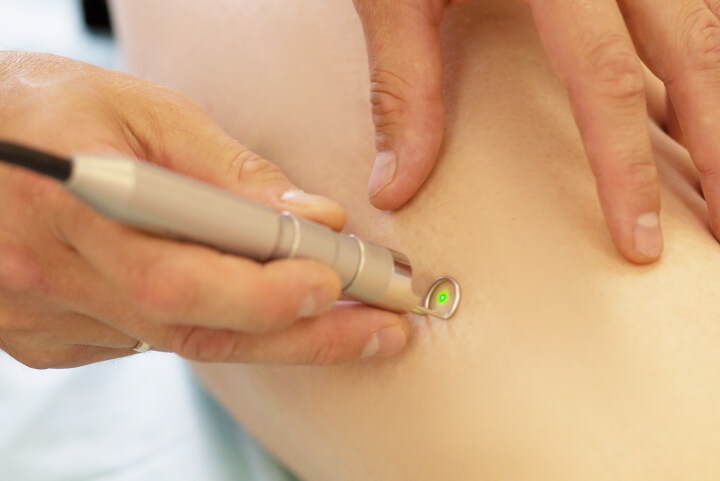The appearance of spider veins on the legs and face can be bothersome. Millions of American adults suffer from this condition, especially on their legs along with other parts of their body. This is why most of them seek non-surgical procedures like laser vein therapy to get rid of leg veins to avoid the risks that come with traditional surgical procedures.
So how many laser treatments do patients require to get rid of spider veins? Most patients see improvements after just one treatment, but others might need up to three treatment sessions to eliminate them completely. This depends on each person and how damaged the veins are when it comes to their reaction to laser treatments.
Learn More: What’s the Easiest Way to Get Rid of Spider Veins on the Face?
According to the American Society for Dermatologic Surgery, spider veins and other common varicose vein conditions affect about 40% of adult women. This incidence increases as people age because of different factors like heredity, sun exposure, hormonal imbalance, pregnancy, and others.
The appearance of spider veins is mostly treated as a cosmetic concern, but some patients also experience uncomfortable symptoms along with the venous condition. They might feel pain, swelling, and heaviness in their legs. In such cases, different procedures like compression stockings, radiofrequency ablation, sclerotherapy, and laser treatments might be necessary.
Laser therapy is one of the most common treatments for different skin problems like spider veins. The exact number of treatment sessions needed to completely eliminate the spider veins vary per patient, but most of them see improvements after just one treatment. Getting rid of larger and more pigmented veins might require up to 3 or more treatment sessions.
The spider veins slowly lighten from dark blue to light red after the treatment, which is why patients might need to wait for a few days or weeks to see the results they want. They might also experience minor side effects like pain, swelling, and redness in the treated areas. These symptoms eventually subside a few days after the procedure.
Although non-surgical vein removal treatments produce more promising results in a shorter time compared to other procedures, these may not be the best procedure for everyone. It’s crucial to do your research first on treatment you’ve chosen so you can determine whether or not it’s the right option for you.
Before heading to the nearest vein clinic to get a laser treatment for the visible veins on your skin, here’s everything to you need to know about spider vein laser treatments:
Laser technology is used for treating several venous conditions, including spider veins and varicose veins. It involves using a special device to deliver light energy to the affected blood vessel, causing it to scar and close. The blood then reroutes to the nearby veins. The colors of the treated vein slowly fade as there isn’t blood flowing inside it anymore.
There are two types of laser treatments depending on the size of the damaged vein:
In both treatments, the treated veins eventually shrink and get absorbed by the body over time. Most patients with small visible veins on their skin only need simple laser treatment. However, consulting with a medical professional helps determine which treatment plan is the best for you.
Aside from explaining how the treatment works, the vascular specialist should also discuss how patients should prepare before, during, and after the treatment.
Before
During
After
Patients with good overall health who want to get rid of their visible veins in the legs, face, or other parts of their body are ideal candidates for this treatment. Those with underlying medical conditions like clotting disorders are advised to skip the treatment. Taking certain medications might also cause complications during or after the treatment so patients should seek the approval of their primary care physician first.
Although laser treatments have fewer side effects and shorter patient downtime than surgical vein removal procedures, they also have minor side effects like:
These common symptoms eventually disappear after a few days, but make sure to contact healthcare providers immediately if they worsen or persist. Finding the right laser technician, aesthetic practitioner, or board-certified dermatologist also helps patients minimize the risk of developing these side effects.
Read More: 4 Positive Effects of Laser Treatments on Eliminating Spider and Varicose Veins

Vein Center Doctor is a trusted full-service vein treatment clinic in New York and New Jersey. Our team of highly-skilled technicians,aesthetic practitioners, and staff help hundreds of patients with their vein conditions and address these with comprehensive treatment plans. We treat spider veins, varicose veins, and other serious venous conditions like deep vein thrombosis.
Explore your treatment options for spider veins, varicose veins, and other venous conditions like sclerotherapy, RFA, EVLT, VenaSeal™, and compression therapy and get back smooth, clear, and vein-free skin. Call us today at 1-862-227-1054.
Most Insurance is accepted for treatment